
Higher education as we know it today dates back to Medieval Europe — when the first universities were established. Today, the oldest existing degree-granting institutions are mostly located in four countries: France, Britain, Spain, and especially Italy, where papal decrees spread centers of knowledge that heralded the 400-year Italian Renaissance starting in the 1300s. The oldest university in the United States is Harvard University, which was founded in 1636, and is among the hardest colleges to get into.
That isn’t to say there weren’t earlier centers of learning elsewhere. The ancient Buddhist monastery of Nalanda in northeastern India, for example, passed on knowledge as far back as 500 A.D. until it was ransacked by invaders in the 13th century. The Madrasa Al Nizamiyya in Khargird, Iran, was founded in the 11th century as one of the first Islamic centers of knowledge. In fact, because of early Islam’s emphasis on teaching certain secular subjects like mathematics and geometry, the two oldest existing universities are Islamic schools in Morocco and Egypt.
Universities in the New World didn’t start to emerge until the 17th century so none made the list of the world’s 20 oldest universities that still exist today. The oldest university in Asia that still churns out graduates today is the University of Santo Tomas in Manila, founded in 1611 by a Catholic bishop, more than a century after the youngest university on this list.
Click here to read about the 20 oldest universities in the world.
24/7 Wall Street reviewed profiles of academic institutions of higher learning and cross referenced founding-date and enrollment number claims with university websites. In some cases we also cross-referenced information with higher-education oriented websites, mainly Times Higher Education and U.S. News and World Report. In some cases, the total student enrollment figures are estimates provided by the universities’ “About Us” pages, in others, they are from the higher-education oriented websites. Figures that aren’t estimates come from the latest available academic school year posted on the universities’ websites.
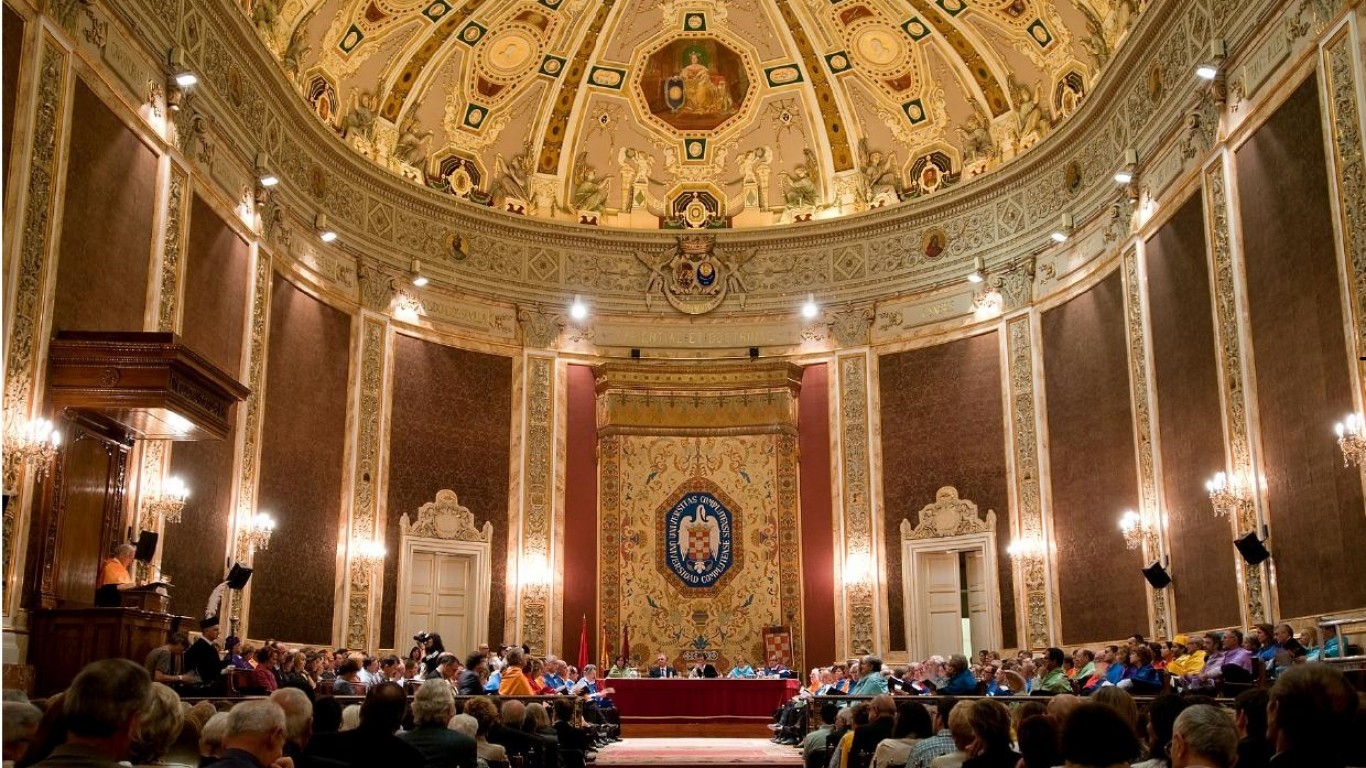
20. Complutense University of Madrid
> Founded: 1499
> Main campus located: Madrid, Spain
> Total student enrollment: 83,391
A relative latecomer to the birth of Western higher education, the Complutense University of Madrid is the youngest of the three oldest existing Spanish institutions of higher learning. Founded by Cardinal Cisneros following a papal bull from Pope Alexander VI on April 13, 1499, the university is built on the ruins of a first-century Roman city in the Spanish capital. The first lecture to students was on the topic of Aristotle’s moral philosophy.
[in-text-ad]

19. University of Pavia
> Founded: 1361
> Main campus located: Pavia, Italy
> Total student enrollment: 23,000 (est.)
University of Pavia claims that King Lotharius referred to an institution of higher education in this northern Italian town already in 825, but the university was officially established by Emperor Charles IV in 1361. Today, this small institution has 18 departments offering bachelor’s and masters’ degree programs for students who can live in residencies built in the 1500s. The university has a fairly strong international relations program and through it has ties to several other European institutions.

18. Charles University of Prague
> Founded: 1348
> Main campus located: Prague, Czech Republic
> Total student enrollment: 49,236
Charles University of Prague is the only Eastern European institution of higher education on this list and only one of three located outside of Great Britain, France, Italy, and Spain. The university was founded by the King of Bohemia and Holy Roman Emperor Charles IV and was patterned after the universities of Paris and Bologna. Albert Einstein taught at the institution around the turn of the 20th century.

17. University of Pisa
> Founded: 1343
> Main campus located: Pisa, Italy
> Total student enrollment: 62,979
The University of Pisa was officially formed by Pope Clement VI on Sept. 3, 1343, but some scholars claim the earlier academic pursuits in the area that date as far back as the 11th century eventually evolved into the university proper. The first subjects taught were theology, civil and canon law, and medicine. Among its storied alumni is Galileo Galilei. The university grew in prestige after the unification of Italy in the mid-19th century and attracted noteworthy lecturers and scholars into the 20th century. Three university alumni won Nobel prizes, including physicist Enrico Fermi.
[in-text-ad-2]

16. University of Florence
> Founded: 1321
> Main campus located: Florence, Italy
> Total student enrollment: 54,000 (est.)
The University of Florence was established by the Florentine Republic with the blessing of Pope Clement VI. The school originally focused on civil and canon law, literature, and medicine. The university has endured the tumultuous times of the rise of Tuscany’s Medici Dynasty by operating at times from nearby Pisa. The university modernized in the 20th century by expanding its faculties to include economics, architecture, physical science, and other disciplines.
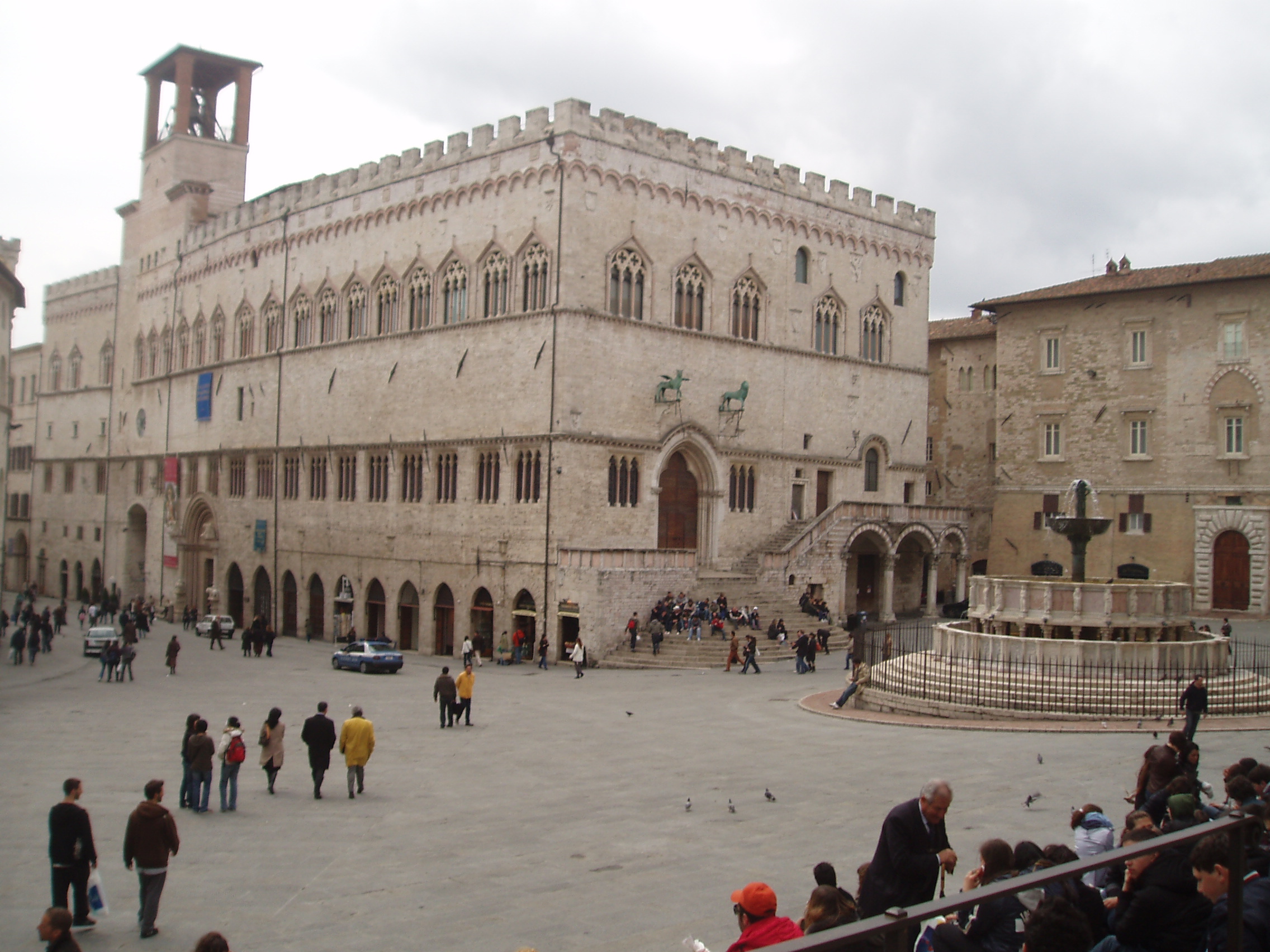
15. University of Perugia
> Founded: 1308
> Main campus located: Perugia, Italy
> Total student enrollment: 23,500 (est.)
Pope Clement V issued a decree establishing the university in 1308, and by 1355 it had official status from Emperor Charles I. Originally, the university located in central Italy focused on law and general arts. In recent years, the university overhauled its curriculum to offer degree programs aimed at meeting the demands of the modern workplace. It also attracts foreign students seeking immersive courses in the Italian language.
[in-text-ad]

14. Sapienza University of Rome
> Founded: 1303
> Main campus located: Rome
> Total student enrollment: 112,557
Located just outside the walls of the Vatican, Sapienza University of Rome was chartered by Pope Boniface VIII in 1303 after excommunicating King Philip IV of France and asserting the supremacy of the papacy. Sapienza University was part of an effort by the clergy to smooth relations between the church and scholars, who began flocking to the city after the university was erected. At the beginning of the 16th century, Pope Leo X infused new vitality into the university by hiring prestigious scholars from all over Europe.
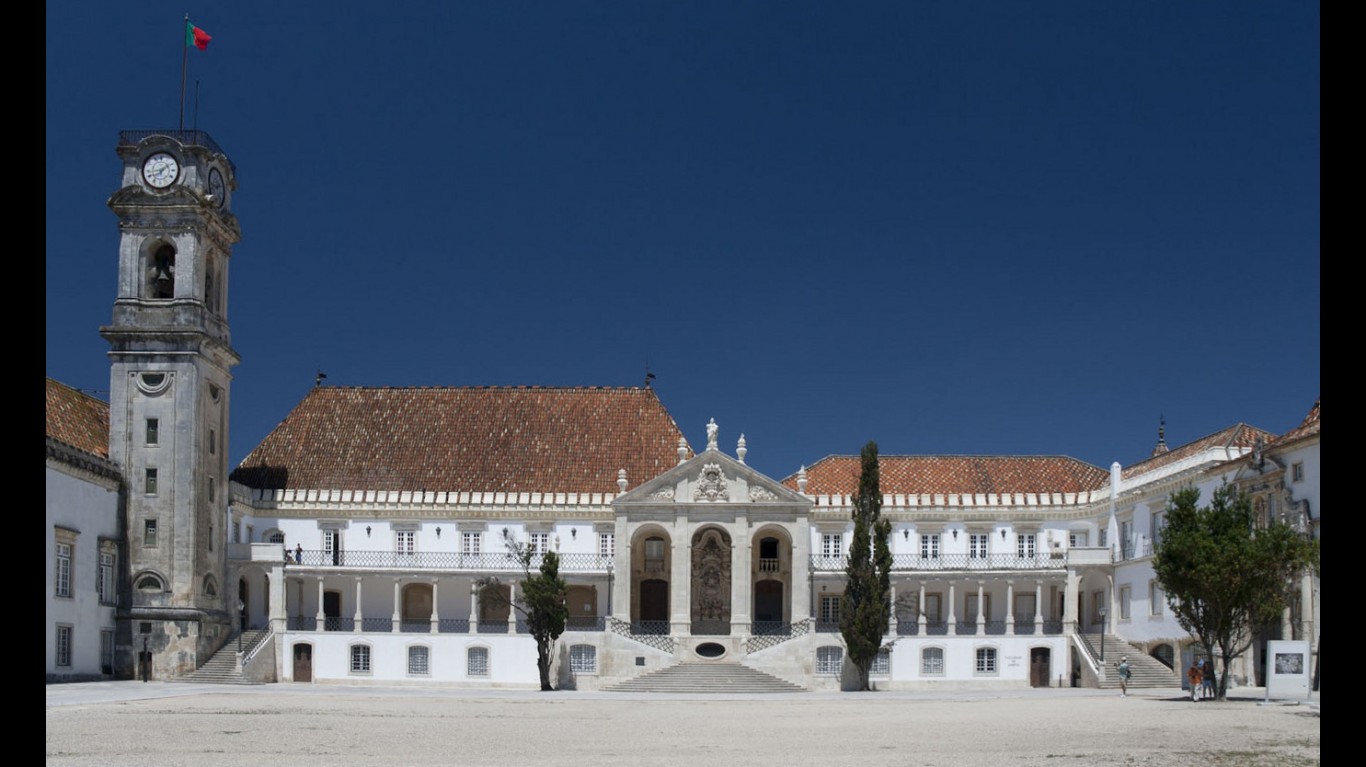
13. University of Coimbra
> Founded: 1290
> Main campus located: Coimbra, Portugal
> Total student enrollment: 23,779
Portugal joined the renaissance of higher education that took place in Europe in the 12th and 13th centuries with the establishment of the university in the Royal Palace of Lisbon, the country’s capital. By 1308, the university relocated to Coimbra and operated in both cities until 1537. The scenic campus was added to the UNESCO World Heritage List in 2013.
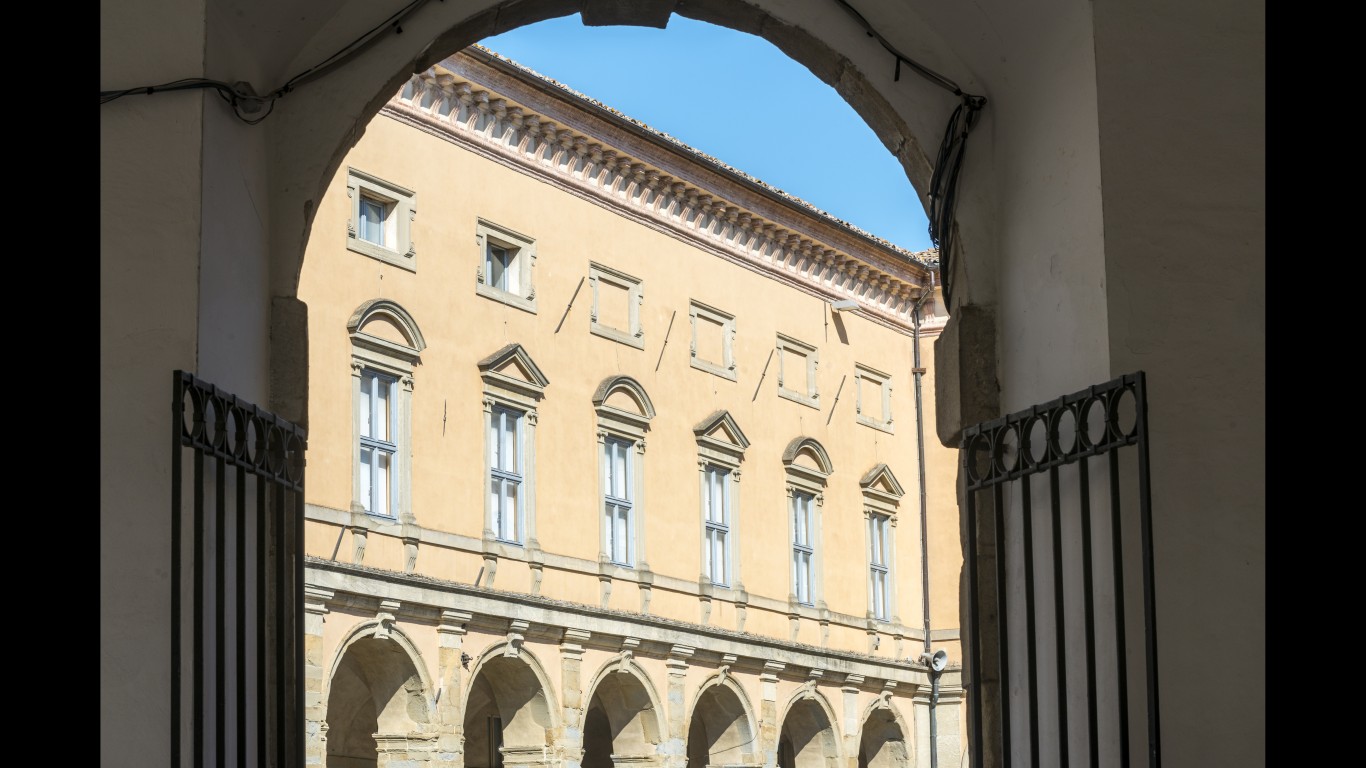
12. University of Macerata
> Founded: 1290
> Main campus located: Macerata, Italy
> Total student enrollment: 10,914
Like many of the world’s oldest existing universities, University of Macerata’s origins are debated and vague. Some say it was founded by Pope Nicolas IV in 1290, while others claim it was founded in the 16th century by Pope Paul III. The university itself leans toward the earlier date, citing a proclamation from the Commune of Macerata. The institution expanded in the 20th century, focusing on humanities and social science, but it still remains the smallest in enrollment of the existing old European universities.
[in-text-ad-2]

11. Sorbonne University
> Founded: 1257
> Main campus located: Paris
> Total student enrollment: 58,778
“The Sorbonne,” as we know it today, was established in 1257, according to the university itself, but antecedents existed as far back as 1160 as the University of Paris. Studies were interrupted during the French Revolution for more than a century, until 1896. Today, the Sorbonne is the flagship school of one of a 10-member association that includes France’s main natural history museum and a renowned business school. Among the more noteworthy alums are noted alumni include Thomas Aquinas, John Calvin, Norman Mailer, and Marie and Pierre Curie

10. University of Valladolid
> Founded: 1241
> Main campus located: Valladolid, Spain
> Total student enrollment: 21,393
Spain’s second-oldest existing institution of higher learning was founded in what is now the country’s northern autonomous region of Castile and León. The University of Valladolid is a public university with four campuses, and today it is known for its student-run orchestra, choir, and theater group. The region is known for speaking what’s considered to be the purest form of Spanish, making it an ideal place to learn the language.
[in-text-ad]

9. University of Siena
> Founded: 1240
> Main campus located: Siena, Italy
> Total student enrollment: 20,000 (est.)
Located 50 miles south of Florence in the small provincial capital of Siena, the University of Siena was a small institution for most of its history. Since World War II, the university expanded to such a degree that today its student population makes up a sizable portion of the town’s 54,000 permanent residents. This gives Siena a vibrant and youthful ambience in the scenic Tuscan countryside. Students at the university are encouraged to take work opportunities related to their fields of study and work experience is integrated into most degree pursuits.

8. University of Naples Federico II
> Founded: 1224
> Main campus located: Naples, Italy
> Total student enrollment: 100,000 (est.)
University of Naples Federico II is one of the few existing early institutions of higher learning that was established by an official charter and therefore has a documented founding date, June 5, 1224. The school is named after the man who issued the decree, Frederick II of Hohenstaufen, and officially named after him in 1987. The king of Sicily and Holy Roman emperor wanted a university in the south that could compete with Italy’s older northern universities in Bologna and Padua. Thomas Aquinas studied at the university before he went to the Sorbonne in Paris.
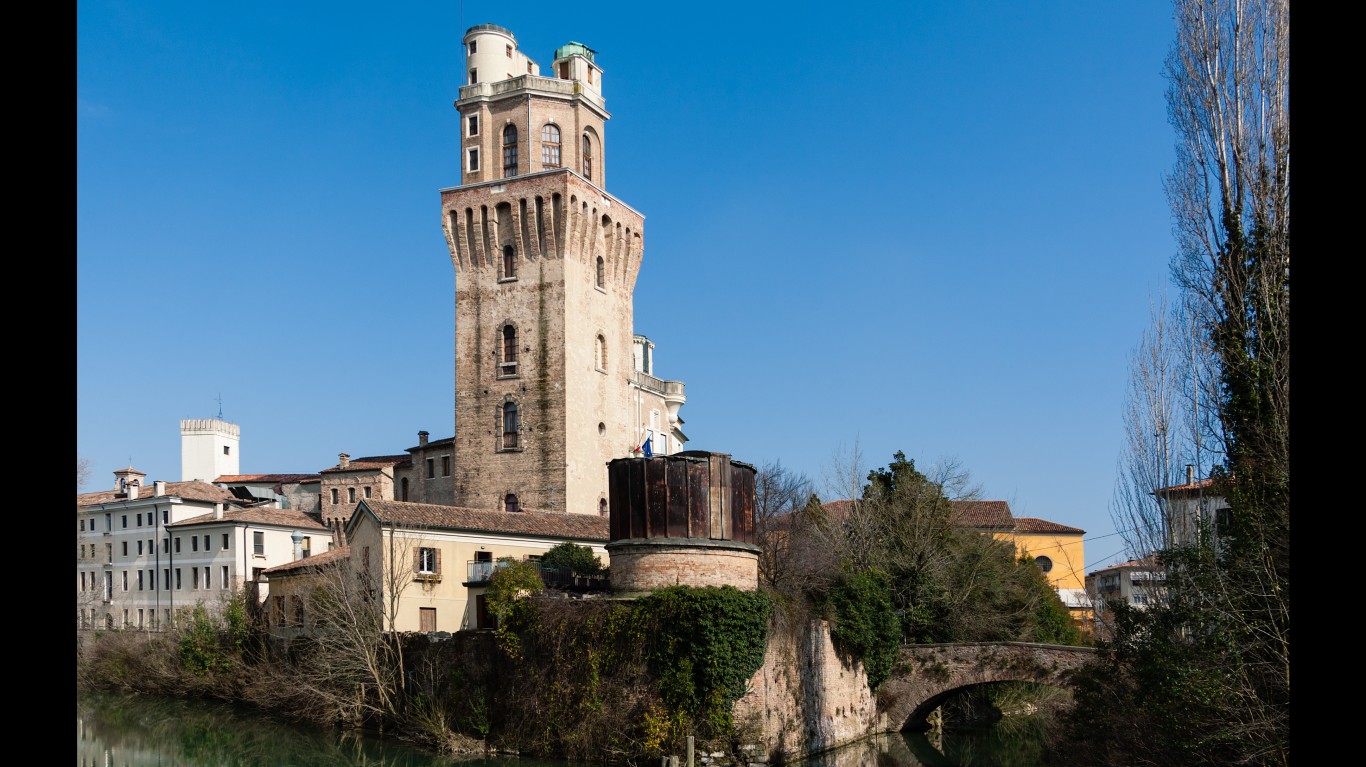
7. University of Padua
> Founded: 1222
> Main campus located: Padua, Italy
> Total student enrollment: 60,000 (est.)
Italy’s second-oldest university originated from the country’s (and the Western world’s) oldest still-existing institution of higher learning. Seeking more academic freedom, scholars and students from the University of Bologna departed to Padua, 72 miles to the north near Venice, to establish a new university. Padua has hosted prominent figures in the sciences, including Andrea Vesalio, founder of modern anatomy, and astronomers Copernicus, and Galileo. In the 1800s, the university began adding faculties beyond its core bases of law, medicine, arts and philosophy, and sciences.
[in-text-ad-2]
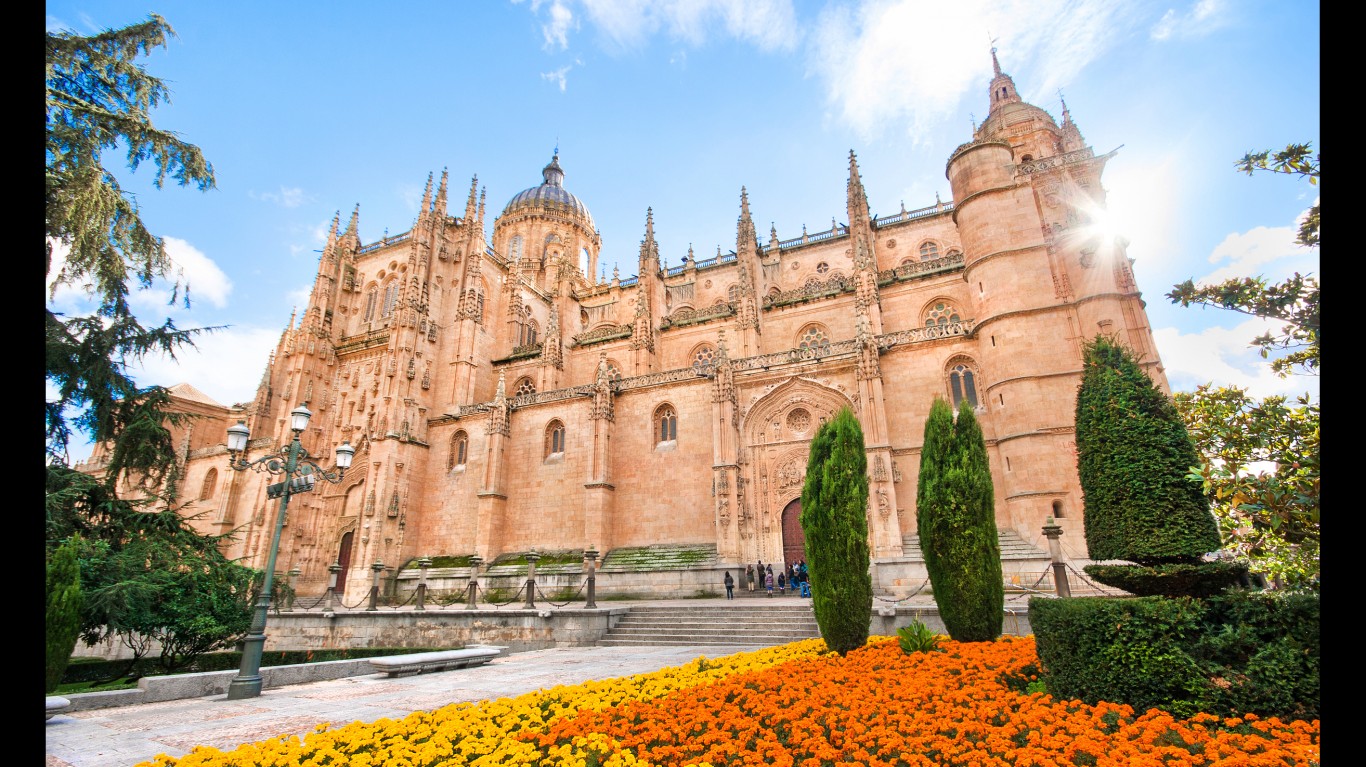
6. University of Salamanca
> Founded: 1218
> Main campus located: Salamanca, Spain
> Total student enrollment: 30,000 (est.)
Fulfilling his desire to see a university within his domain, King Alfonso IX established the Salamanca Schools, or what later became known as Salamanca University. Like other institutions of learning at the time, teachings were focused on law, logic, grammar, and natural sciences. Today, the university has colleges dedicated to law, liberal arts, medicine, and science, and its language and cultural courses attract thousands of foreign languages students each academic year.
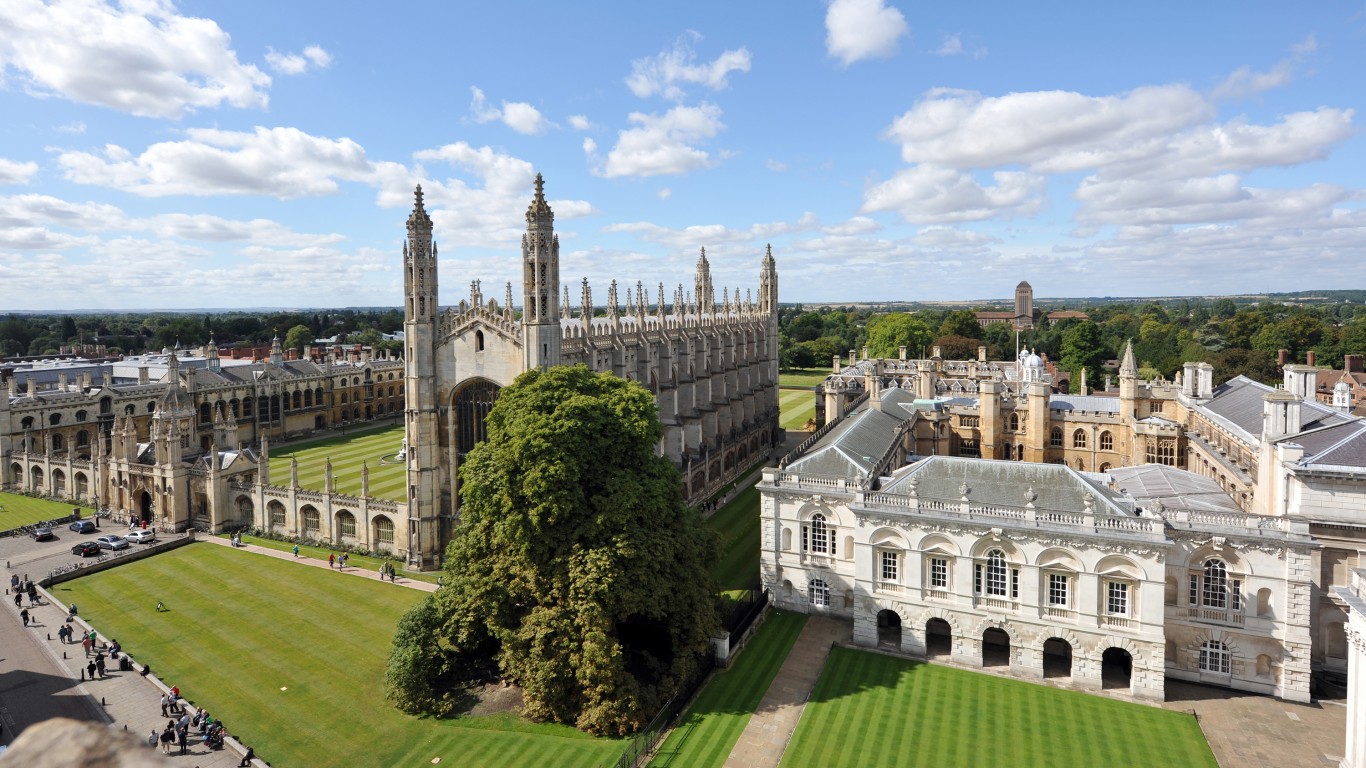
5. University of Cambridge
> Founded: 1209
> Main campus located: Cambridge, England
> Total student enrollment: 18,442
Britain’s second-oldest institution of higher learning that still exists today has its root in its rival institution, Oxford University. The university, which consistently ranks among the top 10 universities in the world, was established by scholars who fled hostile Oxford townspeople and found refuge in the town of Cambridge, 84 miles away. But tensions flared between Cambridge locals and the newly arrived scholars and students until King Henry III intervened in 1231 to protect the scholars from exploitative landlords. Among the noted alumni, are naturalist Charles Darwin, mathematician Alan Turing, and physicist J. Robert Oppenheimer.
[in-text-ad]

4. University of Oxford
> Founded: 1167
> Main campus located: Oxford, England
> Total student enrollment: 23,975
Like many of the oldest institutions of higher learning, Oxford doesn’t have a specific date of foundation. Evidence of teaching in the town of Oxford dates back to 1096, but it’s unclear when these informal and religiously focused teachings evolved into what would be considered an institution. The University of Oxford developed rapidly after King Henry II banned English students from attending the University of Paris in 1167. The storied roll call of alums includes philosopher John Locke, author Stephen Hawking, Prime Minister Theresa May, and Theodor Seuss Geisel, also known as Doctor Seuss.
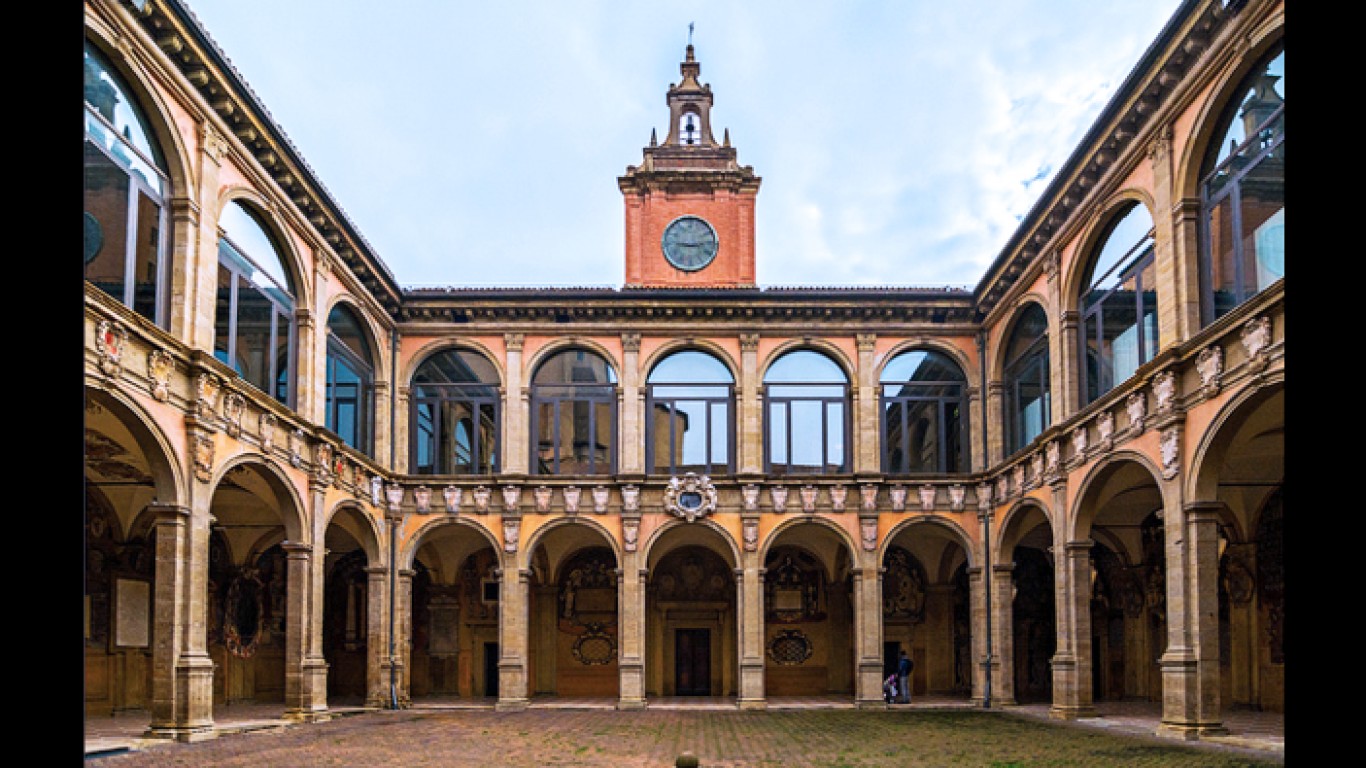
3. University of Bologna
> Founded: 1088
> Main campus located: Bologna, Italy
> Total student enrollment: 85,509
The University of Bologna is the oldest university in Europe that still exists today. It began as a free institution of learning that was independent of the many ecclesiastic schools in Italy at the time. Originally, its courses were taught by masters of grammar, rhetoric, and logic with an overall emphasis on law. Theology wasn’t added until 1364, when the university expanded the topics its scholars taught.

2. Al Azhar University
> Founded: 975
> Main campus located: Cairo
> Total student enrollment: 318,888
Located in the heart of Cairo, Al Azhar has been the center of Arabic literature and Sunni Islamic teaching and jurisprudence for centuries. While Al Azhar remains a global center for Islamic religious teaching, including studies of the Quran and Hadith (traditions and sayings of the Prophet Muhammad), the university also offers professional degree programs like business, medicine, and engineering.
[in-text-ad-2]

1. The University of Al-Karaouine
> Founded: 859
> Main campus located: Fez, Morocco
> Total student enrollment: 8,000 (est.)
The University of Al-Karaouine is “the oldest existing, and continually operating educational institution in the world,” according to the Guinness Book of World Records. The university was founded by a woman 227 years after the death of the Prophet Muhammad. The university taught some natural sciences as part of its religiously centered curriculum and expanded its non-religious curriculum in the middle of the 20th century. Students must have memorized the entire Quran before attending the university.
Take Charge of Your Retirement In Just A Few Minutes (Sponsor)
Retirement planning doesn’t have to feel overwhelming. The key is finding expert guidance—and SmartAsset’s simple quiz makes it easier than ever for you to connect with a vetted financial advisor.
Here’s how it works:
- Answer a Few Simple Questions. Tell us a bit about your goals and preferences—it only takes a few minutes!
- Get Matched with Vetted Advisors Our smart tool matches you with up to three pre-screened, vetted advisors who serve your area and are held to a fiduciary standard to act in your best interests. Click here to begin
- Choose Your Fit Review their profiles, schedule an introductory call (or meet in person), and select the advisor who feel is right for you.
Why wait? Start building the retirement you’ve always dreamed of. Click here to get started today!
Thank you for reading! Have some feedback for us?
Contact the 24/7 Wall St. editorial team.
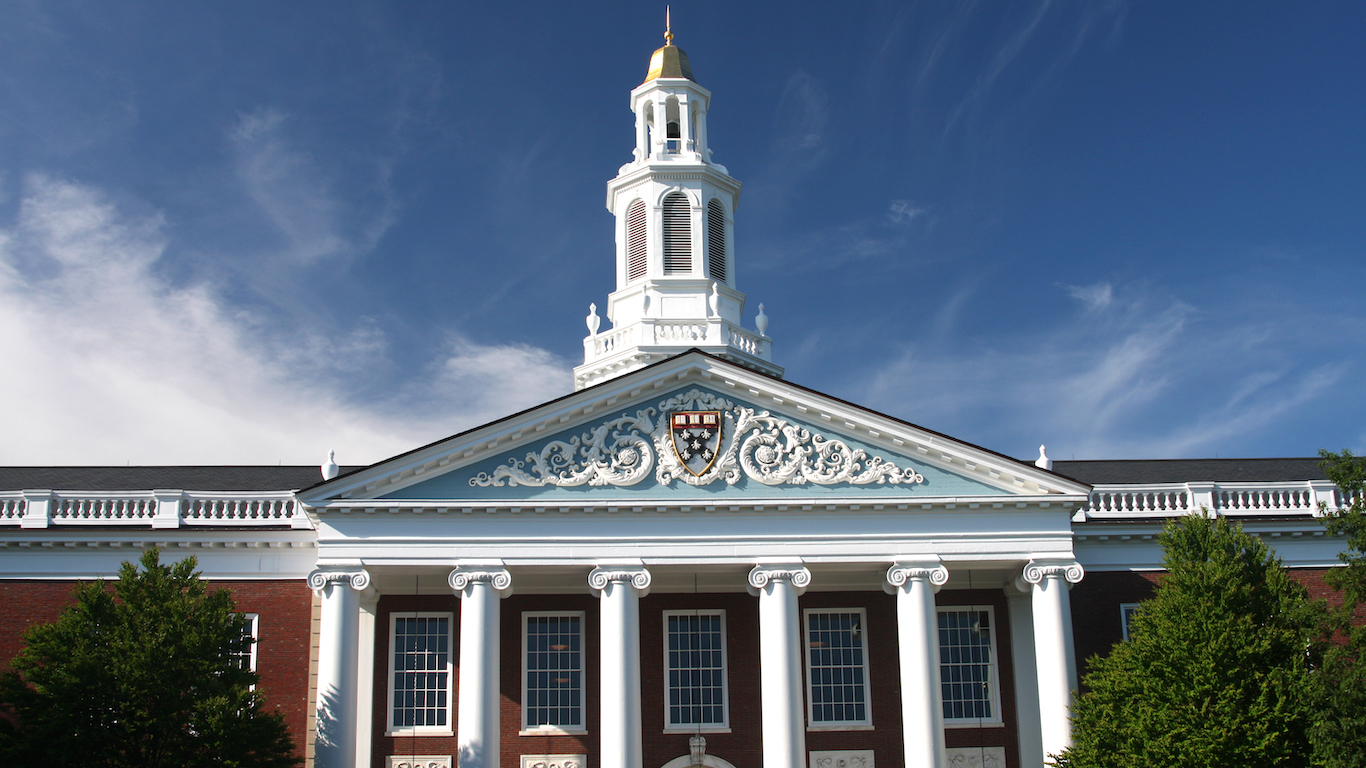 24/7 Wall St.
24/7 Wall St.



